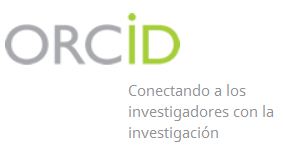Benefits and Challenges of Artificial Intelligence in Higher Education
Keywords:
educación superior, inteligencia artificial, tecnologías educativas.Abstract
Introduction: The controversy generated by a scientific article coauthored by Chat GPT and a human has sparked international debates on artificial intelligence, with some countries such as Italy, where its use has been rejected at the national level. Meanwhile, UNESCO has taken a conciliatory stance, regulating its use in higher education and establishing ethical guidelines. Although artificial intelligence is transforming teaching, concerns persist about its impact on students' ability to think critically and argue.
Objective: To expose the advantages and disadvantages of artificial intelligence in higher education.
Methods: An exploratory systematic review was conducted, using Web of Science and Scopus as source base in English language, of papers published between 2018 and 2023, from the perspective of Fernandez et al.
Results: From the content analysis of the selected sources, three themes were identified: artificial intelligence in higher education, the benefits of using it in higher education, and the disadvantages of its implementation in higher education.
Conclusions: It was determined that the use of tools based on artificial intelligence, for example, Chat GPT, are useful and novel, as they combine current technology with global information and, according to preestablished guidelines, it is capable of providing informed and up-to-date answers on a wide range of topics. However, it is critical to ensure that human interaction remains an essential part of education.
Downloads
Downloads
Published
How to Cite
Issue
Section
License
Copyright (c) 2025 José Erasmo Chamba Cuadros, Eugenio Radamés Borroto Cruz, Eugenio Radamés Borroto Cruz

This work is licensed under a Creative Commons Attribution-NonCommercial 4.0 International License.
Los autores conservan todos los derechos sobre sus obras, las cuales pueden reproducir y distribuir siempre y cuando citen la fuente primaria de publicación.
La revista se encuentra sujeta bajo la Licencia Creative Commons Atribución-No Comercial 4.0 Internacional (CC BY-NC 4.0) y sigue el modelo de publicación de SciELO Publishing Schema (SciELO PS) para la publicación en formato XML.
Usted es libre de:
- Compartir — copiar y redistribuir el material en cualquier medio o formato
- Adaptar — remezclar, transformar y construir a partir del material.
La licencia no puede revocar estas libertades en tanto usted siga los términos de la licencia
Bajo los siguientes términos:
- Atribución — Usted debe dar crédito de manera adecuada, brindar un enlace a la licencia, e indicar si se han realizado cambios. Puede hacerlo en cualquier forma razonable, pero no de forma tal que sugiera que usted o su uso tienen el apoyo de la licenciante.
- No Comercial — Usted no puede hacer uso del material con propósitos comerciales.
- No hay restricciones adicionales — No puede aplicar términos legales ni medidas tecnológicas que restrinjan legalmente a otras a hacer cualquier uso permitido por la licencia.
Avisos:
- No tiene que cumplir con la licencia para elementos del material en el dominio público o cuando su uso esté permitido por una excepción o limitación aplicable.
- No se dan garantías. La licencia podría no darle todos los permisos que necesita para el uso que tenga previsto. Por ejemplo, otros derechos como publicidad, privacidad, o derechos morales pueden limitar la forma en que utilice el material.


